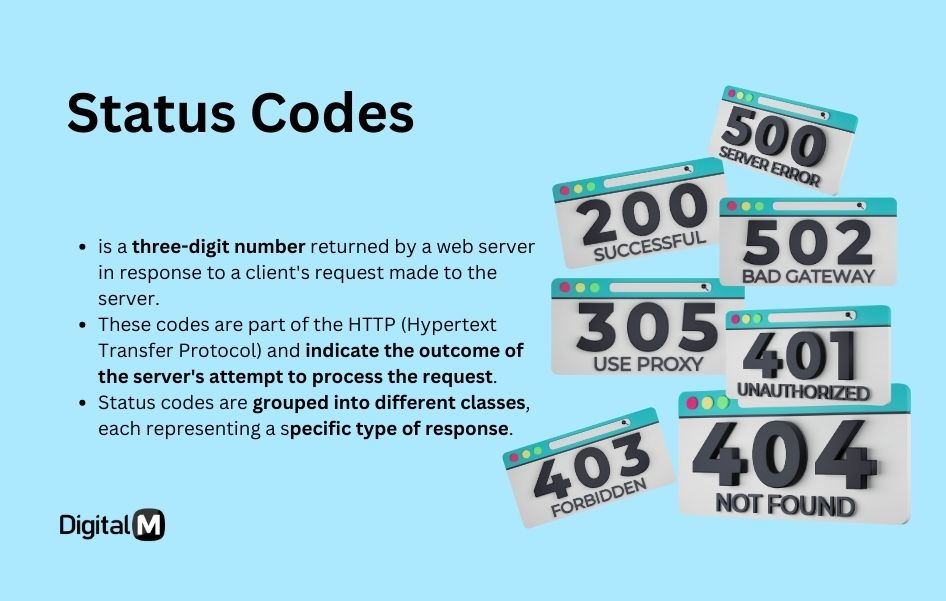Status Code
A status code is a three-digit number returned by a web server in response to a client’s request made to the server. These codes are part of the HTTP (Hypertext Transfer Protocol) and indicate the outcome of the server’s attempt to process the request. Status codes are grouped into different classes, each representing a specific type of response.
When you visit a website, the server responds with a three-digit code to tell your browser how the request was processed—whether it was successful, redirected, or encountered an error.

Key Points:
HTTP Protocol: Status codes are an integral part of the HTTP protocol, defining the communication between web clients (browsers) and servers.
Three-Digit Numerical Codes: Status codes are expressed as three-digit numbers, and they fall into different ranges or classes.
Common HTTP Status Code Classes:
1xx (Informational): Indicates that the request was received and the server is continuing to process it.
2xx (Success): Indicates that the request was successfully received, understood, and accepted.
3xx (Redirection): Indicates that further action is needed to complete the request, often involving redirection to a different URL.
4xx (Client Error): Indicates that the client seems to have made an error in the request, and the server cannot fulfill it.
5xx (Server Error): Indicates that the server failed to fulfill a valid request.
Examples of Common Status Codes:
200 OK: The request was successful, and the server is returning the requested data.
404 Not Found: The requested resource could not be found on the server.
301 Moved Permanently: The requested resource has been permanently moved to a new location.
Use Cases:
Debugging: Developers use status codes to identify and troubleshoot issues with web applications.
SEO: Search engines use status codes to understand the status of web pages, influencing indexing and ranking.
Importance in SEO:
SEO professionals pay attention to status codes as they can impact a website’s search engine rankings. For example, 404 errors may negatively affect SEO if not handled properly.
Why it Matters:
Communication: Status codes provide clear communication between servers and clients, indicating the success or failure of a request.
User Experience: Understanding status codes helps developers improve user experience by handling errors gracefully.
SEO Impact: Certain status codes can influence how search engines crawl and index web pages, affecting a site’s visibility in search results.
In summary, a status code is a three-digit number returned by a web server to indicate the outcome of a client’s request. These codes are crucial for communication between web servers and browsers, influencing user experience, debugging, and even impacting a website’s search engine optimization.

